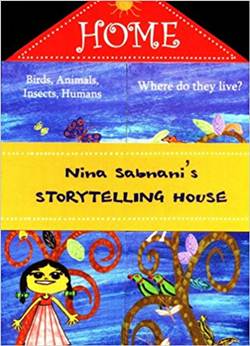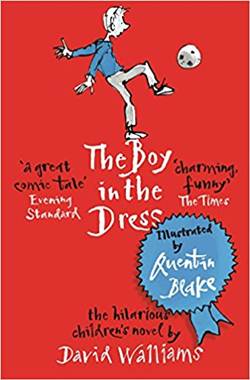This week, on books with LGBTQI themes
Like the Rajasthani storytelling box, Kavad, that opens out in colourful panels, each revealing a narrative of its own, Nina Sabnani’s Home unfolds in interactive segments to introduce children to ideas of home, family and belonging.
 The boy and the Bindi
The boy and the Bindi
How does one talk to children about gender diversity, about acceptance and the long history of gender discrimination against those society deems as different? While the struggle is still on to overturn the archaic Section 377 of the Indian Penal Code, it was the June 1969 Stonewall Riots in New York that paved the way for the first pride march and established June as the pride month. Here’s a selection of books to introduce children to gender diversity, bright and early:
Like the Rajasthani storytelling box, Kavad, that opens out in colourful panels, each revealing a narrative of its own, Nina Sabnani’s Home (2010, Tulika Books, appropriate for 3+ years) unfolds in interactive segments to introduce children to ideas of home, family and belonging. Do families always mean a mother, father and a child? Can the places we call home only be of brick and mortar? Sabnani addresses these questions largely visually, pitching focus on the diversity that informs our lives at every level — single-parent families and those helmed by same-sex parents, thatched-roof houses and even the large pipes on the road that serve as makeshift homes. A sensitively done book, it nudges children to open their minds to diversity and how same-same can also be different and fine.
 Home- Nina Sabnani
Home- Nina SabnaniIn Toronto-based writer-musician-filmmaker Vivek Shraya’s picture book, The Boy and the Bindi (2016, Arsenal Pulp Press, appropriate for 5+ years), a young boy is obsessed with his mother’s bindi and wants to try it on. Instead of chastising him, his mother allows him to wear it, explaining to him the significance of the bindi or the bindu in Asian culture. As she explains how the circle is taken as the starting point of creation in Hinduism, she also makes room for her son to go beyond accepted gender norms to arrive at something he feels most comfortable in. Vibrantly illustrated by Rajni Perera, this is a book that introduces religion as well as the scope of individuality in our lives.
Mayil Ganeshan is 12, curious about the world around her and full of questions. She also wants to be a writer, but, till that happens, she has a diary to articulate her thoughts in. Niveditha Subramaniam and Sowmya Rajendran’s Bal Sahitya Puraskar-winning Mayil Will Not Be Quiet (2015, Tulika Books, appropriate for 10+) is a delightful journey into a tween’s mind and opinion about a wide range of topics — families and friends, gender discrimination in everyday life, domestic violence and a lot more. Through cultural references — everything from Rajinikanth movies to Virginia Woolf to Ramayana — and what she finds right or wrong with them, Mayil builds up a believable picture of a young adolescent trying to find her feet in an adult world.
When psychiatrist Justin Richardson and playwright Peter Parnell’s And Tango Makes Three was published in 2005, the authors expected some amount of backlash for it. After all, addressing homosexuality in a picture book aimed for children in the age group of 3+ years was not usual. Their story was based on a news report about two male penguins at New York’s Central Park Zoo, who were a couple and who were trying to hatch a stone. When a thoughtful zoo keeper arranges for them to raise a baby penguin, the two throw themselves into parenting and make the baby their own. Since its publication, the story of this unusual family with two doting dads has been at the centre of heated debates across libraries in the world about its eligibility as children’s literature, but there’s no denying the charm of this cute same-sex family and their affections for each other.
 The Boy in the Dress
The Boy in the DressEver since his mother walked out on them two years ago, 12-year-old Dennis lives with his elder brother and his truck-driver father in a town whose ordinariness “only really pointed out the sameness of everything”. He loves football and is the star member of his school team, but he also has a secret passion: fashion. He adores the Vogue magazine, poring over it for hours, much to the chagrin and horror of his father. The most fashionable girl in school (and Dennis’s crush) Lisa, however, understands and the two play dress-up, till one day, Dennis takes up Lisa’s challenge and actually turns up in school in a dress. He is promptly suspended, but that means the football team also loses out on its star player. Will they even make it without Dennis? David Walliams’s debut book for children in 2008, The Boy in the Dress (2008, Harper Collins, appropriate for 8+), is not the first book on cross-dressing kids, but it does a stellar job at celebrating differences with humour, tact and empathy.





- 01
- 02
- 03
- 04
- 05






















